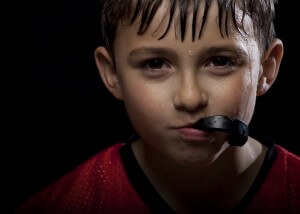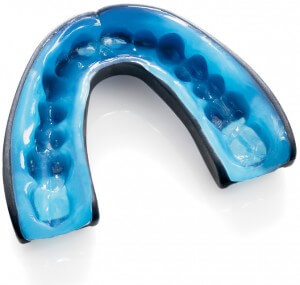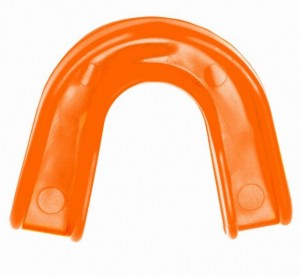
On a sunny summer afternoon on a dusty baseball diamond, the crack of a line drive rings out. As the infielder stoops to make the play, a ripple in the dirt causes a bad hop and the ball ricochets up, hitting them in the mouth. This player is lucky – the result is just a bloody lip, but other times the damage can be more serious.
As the weather turns warm and kids migrate back outside for play, activities or sports, parents may need to consider a mouthguard to protect young athletes. As with most parenting decisions, the choice is highly individualized and subjective, and should be based on;
- risk potential (contact vs. non-contact sports)
- the competitive environment, and
- the intensity at which your athlete performs.
The Best Defense is…
Though there are variable factors, the risks are very real. A 2014 report on the National Institutes of Health website notes that sports injuries account for 13% of all childhood dental trauma, and boys are twice as likely as girls to be injured. The long standing-recommendation has been the use of a protective mouthguard to prevent external and tooth-on-tooth damage from impacts during competitive play. Of course, special precautions must be taken for players with braces or other orthodontic devices.
However, most guards represent a delicate balancing act between comfort and safety. Some offer excellent protection, but it’s due to their thick material or bulky design. Those factors may make them uncomfortable, and can cause athletes to avoid or “forget” to wear them. And the 1st rule of any protective equipment is: it’s only effective if it’s used. So make sure your athlete is involved and comfortable with the choice.
There are three main types of mouthguard, each with benefits and drawbacks.
Custom Dental

Customized guards are the most precise-fitting devices, created with molds made from plaster casts of the patient’s own teeth. These are also the most expensive option, but provide superior protection, quality, and comfort. Their custom nature accommodates unique mouth dimensions and tooth irregularities, while maintaining optimal thickness across all surfaces. The fitting of a custom mouthguard must also be overseen by a dental professional.
Boil-and-Bite

Recent advances in over-the-counter consumer products allow at-home fitting with self-molding kits. These packages cost a fraction of the custom price, and are available in most sporting goods stores and online retailers. The process consists of dipping the device in boiling water to soften the composite plastic, cooling it briefly to avoid burns, then biting into the gel to mold the guard to the patient’s teeth. While not as comfortable as custom guards, this option can be viable for patients with braces, and provides superior protection to traditional rubber guards.
Traditional

Designed mainly to protect chipping caused by tooth-on-tooth contact, these one-size-fits-all guards do little to protect teeth against exterior impacts to the mouth, chin or jaw areas. The upside is that they are very inexpensive, making them an affordable option for low mouth-risk sports or forgetful athletes who are prone to losing things.
Broader Benefits
Regardless of the sport or possible dental injury, active kids are healthy kids. Get them up, move them outdoors, and keep them playing – the benefits of exercise far outweigh any potential risks for most kids and teens. And if you have concerns about choosing a mouthguard for your young athlete, contact us with questions and we’ll be happy to discuss the available options.